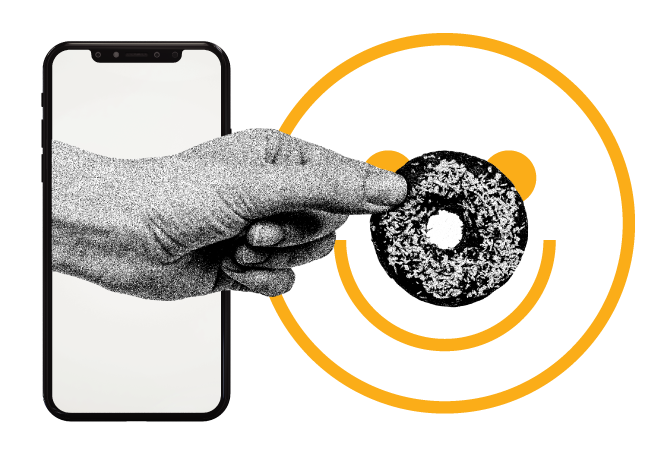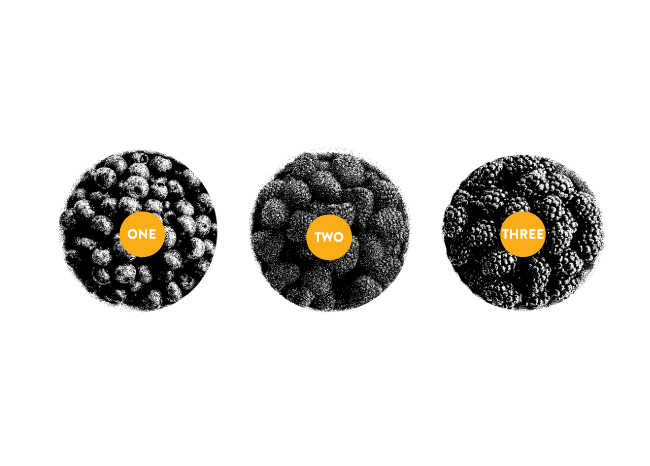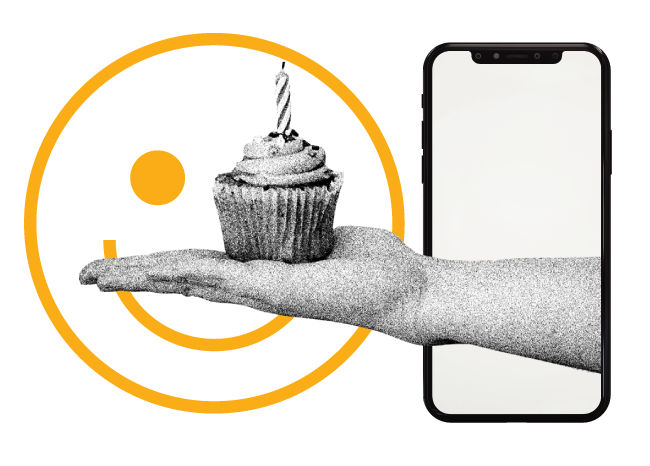
If link-worthy content was a beautiful cake, your sources would be your ingredients. You would have nothing without essential components like eggs, flour, or baking soda. And even so, you can easily mess up the recipe by using too many or too few of your ingredients, or pulling out your cake too soon.
The same concept applies to the content you create. If you don’t do enough research or fail to use quality external sources, you could easily spread misinformation. If you use too many sources or provide sparse commentary on them, your readers will walk away without anything substantial.
When you read a piece of content that is well-informed and has a good balance of sources, like any good piece of cake, you won’t forget it any time soon.
What Is a Successfully Baked Piece of Content?

In the past, we’ve talked about the importance of internal and external links and the value they can bring to your website. Internal links can provide “link juice” to a piece for sharing any authority that webpage receives others on your site. So if you include naturally placed links, you have more chances of being able to boost authority and keyword signals on your other webpages.
Moreover, external links are equally as important in the SEO world. They can establish your site’s credibility on a subject and they can also envelop your site in a good link neighborhood. But, not all links are created equal. As mentioned, it’s all about the baking process or, rather, the analysis that should be done to create a trustworthy, authoritative piece of writing.
Before: Assemble Your Ingredients

Arguably, the most important baking stage is assembling your ingredients or, in the content creation process, your external sources. Just like reading your recipe ingredients first, gathering and reviewing your sources at the very beginning of your content creation journey helps you gain an idea of what you’re creating.
At this stage, you may have the general concept in mind, but it’s okay if you still have uncertainty. If anything, this uncertainty can help you create an even more comprehensive piece of content. It can lead you to ask more questions like:
- What’s on the SERP for the main keywords for your piece? The first step in any content creation starts with taking a look at the search engine results page (SERP) for your keywords. Google your main keyword for the article you have in mind and see what else is out there — whether it be primary or secondary sources, which we’ll dive into later.
- What is common knowledge within your field/niche? In the writing world, you hear the phrase, “Always use sources for anything that isn’t common knowledge.” This begs the question of what common knowledge looks like within your field or around your topic. If your audience is also filled with experts, you don’t want to patronize them by unnecessarily using basic articles as sources. Instead, you should focus more on creating an original spin and finding sources for that niche information.
- What points need substantiation? Even if you have expert knowledge of your article's subject, sometimes your audience may not know that. Not only can you discuss your expertise in your author bio, but you should also figure out which points need substantiation — or further proof — to discuss your point with the help of credible external sources.
You’ll inevitably see a lot of sources during this stage, and it’s easy to get overwhelmed, but you won’t need every source you run into. Instead, you’ll only use the best, most credible sources that point toward your authority.
Evaluate E-A-T
If we go back to the cake metaphor, a lackluster external source can be just as disastrous as a rotten egg in a cake. No one wants to eat a rotten cake, just like no one wants to read a piece of content with ill-informed sources. When digging for your sources, keep E-A-T (Expertise - Authority - Trustworthiness) in mind and filter each external source with these questions:
- Expertise — Is the author of your source an expert in their field who uses credible sources themselves?
- Authority — Is your source well-established enough that most will recognize it? Is the publisher a leader in rankings and the public eye?
- Trustworthiness — Does your source have a bias? Does the author or organization have a history of publishing true and trustworthy content?
Google itself also uses E-A-T when establishing rank. After the 2019 update to their Search Quality Evaluator Guidelines, Google announced that they factor in E-A-T when evaluating a site’s quality, specifically after pinning down its purpose. Sites that publish content relating to financial, medical, legal, and other scientific topics are under particular scrutiny. However, if these sites also consistently update high-quality, credible content and use E-A-T sources, they have little to worry about. In other words, let them E-A-T cake.
Delineate Primary and Secondary Sources
All external sources can be divided into primary and secondary sources. The closer you get to the original or primary source, the more credible it is. The further a primary source goes within the public zeitgeist — until it’s found in secondary sources, tertiary sources, etc. — the more human error comes into the mix.
Whether it be personal bias, misinterpretation, or purposeful exaggeration, there are plenty of reasons why primary sources may be misconstrued from their original publication. As such, the best way to avoid spreading misinformation and stay as credible as possible is to find the primary source itself instead of relying on someone else’s interpretation. Luckily, this can be as simple as a Google search or a little investigation through a page’s external links.
That being said, it’s best to simultaneously have a nuanced perspective with external sources. Some secondary sources are well-established and make great efforts to establish their credibility. When reading these, it’s best to consider additional factors as well, such as the publication date, the author’s previously published work, and the evaluation of other sources they use.
“Follow the Money”
Another factor you should consider when researching your external sources is to evaluate whether they’re a competitor within your field. If you’re familiar with your competitors, this may be an easy task. However, this step can be especially tricky if you’re less familiar with services that aren’t directly competing but still operate within your field.
Even if a site doesn’t necessarily earn money the same way, it may still be a competitor. For example, if you’re creating an article about wedding rings and come across a website that compiles wedding services and amenities — possibly including other wedding rings — it’s best to avoid it. Although this other site may not earn money from wedding ring sales, it may earn money through a promotional or affiliate link model, sending potential customers to your competitors.
Further, you should also evaluate where this money is going. Non-profits are a good example here. Since all of their profits typically go toward their mission and further research in their field, they have plenty of resources dedicated to educating the public about their work.
During: Bake the Cake

Now comes the timing. All the ingredients have been mixed together. You have the right sources and information but you can’t simply spout random information with no context.
It would be as if you tossed in your cake without preheating the oven and expecting your guests to eat raw cake batter. Although some might consider that edible, it’s certainly not recommended nor as good as a fully baked cake.
Let’s take a look at what a proper bake time looks like when it comes to analyzing your external sources.
Add to the Conversation
Instead of using external sources, some people will compensate by using “fluff” — writing that doesn’t actually add anything to the conversation or, in some cases, something writers use for the sake of keyword stuffing — an outdated SEO practice to increase keyword density on a site in hopes of boosting its rankings as well.
Although some may argue that this practice has merit, it ultimately looks inauthentic from a reader’s perspective. After all, not many people want to read an article that provides a perspective they could’ve found from a more recognizable and user-friendly source.
Instead, provide credible external sources and add your original thoughts on the subject to create a win-win scenario for everyone. You can even add a discussion that the original authors from your external sources would be interested in. Plus, your readers can understand your perspective more within a piece that holds its own side of the conversation.
Of course, this conversation can take a variety of approaches based on your perspective and your research process. When adding to the conversation, answer a couple of these questions to help you on your journey:
- How does your source connect to the article?
- Are there any insights you learned in the research process?
- Can your source be used as a tangential point for something you also want to discuss?
- How can you use the authority of your source to prove the integrity of your point?
Once you’ve answered these questions, you can start actually writing, which may be the best time to quote your source directly.
Use Quotes
Sometimes quotes can be the best addition to a piece of content. There’s only so much you can say, and if your source is authoritative enough, it can be the perfect way to round out a piece.
However, just because you’re using a couple of quotation marks, doesn’t mean you can slack off.
First off, it’s best to give credit where it’s due. If you’re quoting a specific person, cite their name along with the source where they were quoted. In addition, it’s important to add details about when that quote was made. Citing the year not only makes your piece more evergreen, but it can also cover your tracks if your points are ever contradicted with future updates.
As a rule of thumb, it’s best to provide equal if not more analysis of quotes. So if you have a quote that’s a paragraph long, you should spend roughly that same space — if not more — adding to the conversation, contextualizing it to the subject, and generally inserting your voice.
Balance Quotes and Analysis
Now, talking about adding substantial conversation and proper analysis to external sources is all well and good, but it’s important to take a look at this process in action.
Say you’re planning on writing an article on how COVID-19 affected the economy. During the process, you found an authoritative resource published by the Bureau of Labor Statistics that discusses the evolution of women in the workplace and provides insightful information about how this demographic was affected during the pandemic.
Someone with limited knowledge of properly baked content might write something like this:
“The Bureau of Labor Statistics states, ‘The effects of the COVID-19 pandemic on the job market in 2020 were widespread and varied by gender and across race and ethnicity groups. For example, women were disproportionally affected by the pandemic-induced recession in the spring of 2020, in part reflecting their overrepresentation in some of the hardest hit sectors of the economy.’ This points out that women in the workforce were unfairly fired during the COVID-19 pandemic.”
Although this analysis does summarize the quote, it’s just that — a summary. It doesn’t add anything to the conversation, and it’s a quite simple interpretation of the quote. From a visual perspective, you can see the disproportionate level at which this passage relies on the resource rather than its own interpretation — the quote takes up an entire paragraph, and the analysis is only a sentence. Further, they don’t use this quote to connect to the source of the matter, at least not fully.
Someone who has been instructed on properly baked pieces of content might write something like this:
“The COVID-19 pandemic affected everyone in some aspect of their lives, but women-dominated fields — particularly fields dominated by women of color — saw these impacts the most. In a 2022 report, the Bureau of Labor Statics stated that women were financially impacted the most by the recession in 2022, ‘...in part reflecting their overrepresentation in some of the hardest hit sectors of the economy.’
Unlike previous recessions, the initial COVID-19 recession specifically impacted industries that rely on in-person employees, such as hotel staff in the travel industry and teachers in public education — both of which happen to employ women as the majority. Not only did this negatively impact these workforces, but it also illustrated our society’s dependence on women’s roles within essential services that we take for granted on a daily basis.”
Based on a visual perspective, this passage is more balanced between the quote and the analysis. Not only does it provide a more succinct quote, but the passage also interprets it with a more in-depth analysis and connects it to the matter at hand.
After: Apply Frosting

Let’s be real. A cake without frosting isn’t actually a cake, and a piece of content isn’t finished if you don’t consider its evergreen status during the research and publication process. And while evergreen content can be created and finished in one sitting, it’s also an ongoing analytical process. Creating evergreen content is all about consistently fact-checking your content and continually expanding your reach of content with the help of — you guessed it — more external sources.
Fact-check
Not only should you use external sources while you create content to make sure your facts are correct, but you should also use them after the fact. In fields where studies are frequently published and continue to refute common knowledge, this is especially important. Although many think that misinformation in social media and content creation is a malignant plot, most of the time it happens when people don’t consistently fact-check their work.
Failing to fact-check does plenty to affect your SEO potential. Following Google’s MUM algorithm update, Google can even fact-check your featured snippet to see if it corroborates other reputable sources. If you don’t have enough information, Google won’t feature your snippet, and you may see less audience interaction as a result.
This occurrence is best exemplified in Your Money Your Life (YMYL) content. Since this content relies on constantly evolving factors, such as scientific studies unveiling health findings or changing market evaluations, you may find that content you published several years ago may not be as true as an article that you wrote today within the sphere. For this reason, it’s not only imperative you find sources that have been recently published, but you should also consistently make sure all of your published content stays evergreen and credible for years to come.
However, if you don’t have the time to consistently update your content with recent findings, you can always make your content evergreen by opting for methods such as providing dates for the sources you use. For example, instead of saying, “A recent study states…” you should opt for a more evergreen option like, “A 2022 study reported…”
This option has several benefits:
- You become more aware of how recent your sources are, which assists in fact-checking efforts;
- It’s more descriptive and reader-friendly;
- Readers can see the date itself in comparison to your publication date, so they know you’re doing your due diligence.
With evergreen content, you can rest easy at night knowing you won’t mislead readers, and you’re that much closer to making the perfectly baked content.
Stay Open to Future Ideas
Sometimes in the process of research before, during, and after publication, you’ll find an external source that may not fit or inform your current content, but don’t throw it away completely. This new source can potentially spur thoughts of a new content strategy, especially if it can help you meet your SEO goals.
In addition, keeping up to date with relevant external sources within your field can also help you to continually update your website with new content. Although this may sound like a hassle, it’s ultimately one of Google’s ranking factors. Again, don’t lean from one extreme to the other — consistently updating your website with new content can get out of hand too. In general, you should prioritize quality over quantity in this process.
Quality should always be end-game. For this reason, consider going back and revising your previously published pieces to make sure you have an arsenal of perfectly credible bakes.

